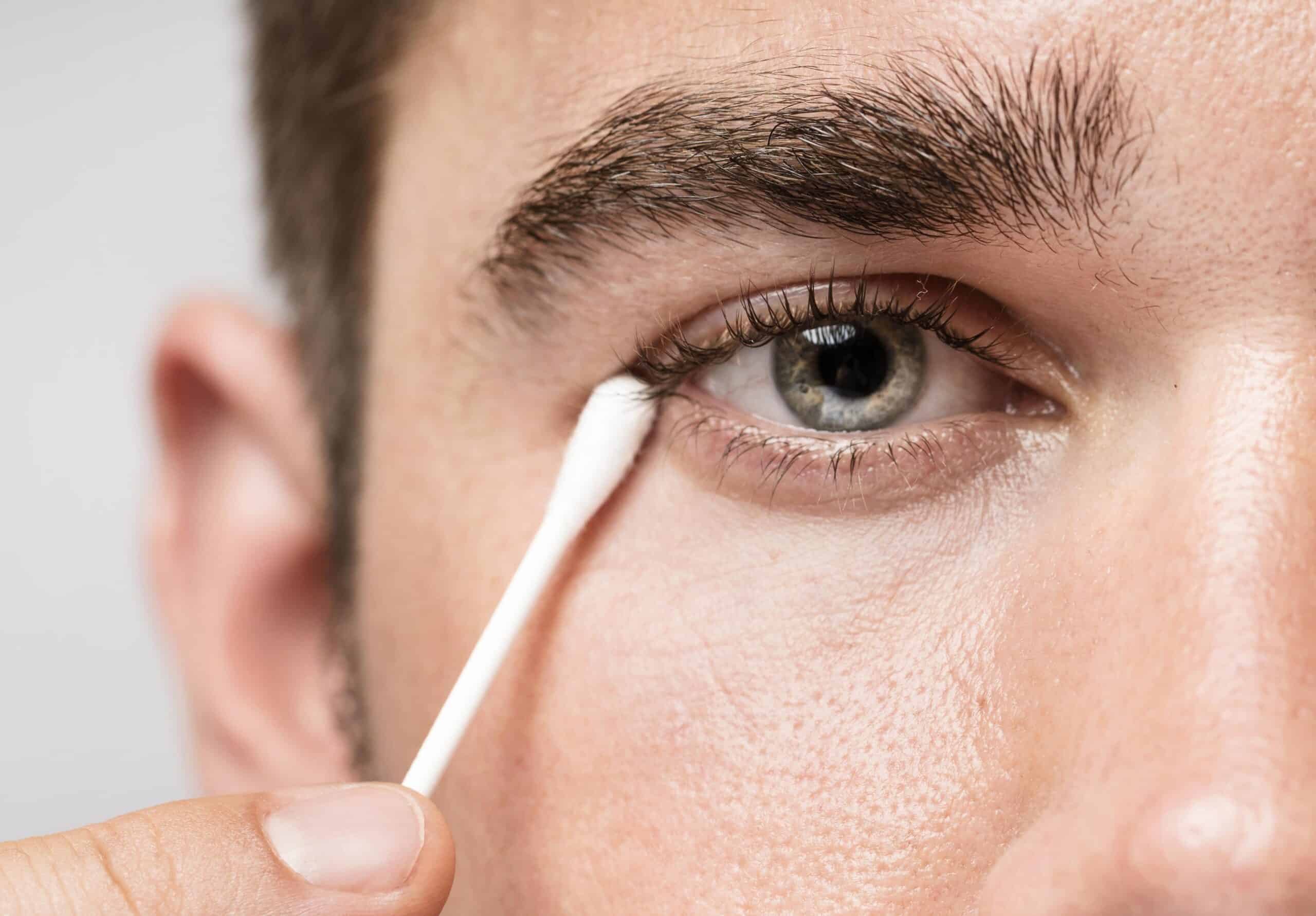Chloramphenicol Eye Ointment is a topical medication commonly used in the treatment of bacterial infections affecting the surface of the eye. It contains the active ingredient chloramphenicol, a broad-spectrum antibiotic that destroys the bacteria causing the infection. The Eye Ointment is available either as a prescription or over-the-counter medication, and it is widely used in hospitals and clinical settings.
This medication is specially formulated to treat eye infections such as conjunctivitis, blepharitis, and keratitis. It is effective against a broad range of gram-positive and gram-negative bacteria, including Haemophilus influenzae, Streptococcus pneumoniae, and Pseudomonas aeruginosa, among others. It is delivered as a sterile, white or yellowish ointment in a 4g tube, with each gram containing 10mg of chloramphenicol.
The uses of Chloramphenicol are straightforward, and patients can easily self-administer the medication. Before application, patients should ensure that their hands are clean and dry. Using a clean fingertip, a small amount of the ointment should be squeezed onto the lower eyelid or conjunctival sac. Patients should then blink a few times to help spread the ointment evenly. This process should be repeated up to four times a day, or as prescribed by a healthcare provider.
The Eye Ointment is generally well-tolerated, but like all medications, it may cause some side effects such as blurred vision, eye irritation, and allergic reactions. Patients with a history of allergies to chloramphenicol, or with underlying eye conditions, should consult a healthcare provider before using this medication.
What Is Chloramphenicol Ointment for Eyes?
It is a type of medication used to treat bacterial eye infections. It is an antibiotic that prevents the growth and spread of bacterial cells. Chloramphenicol comes in the form of an ointment that is applied directly to the eye.
The active ingredient is chloramphenicol, an antibiotic that works by blocking the production of proteins necessary for bacterial growth. By doing this, chloramphenicol prevents the bacterial cells from multiplying and spreading, ultimately leading to their destruction.
Thel eye ointment is only available with a prescription from a doctor or other healthcare provider. It is important to follow the instructions provided by your doctor carefully to ensure that you receive the full benefit of this medication and minimise the risk of side effects.
What Are The Uses Of Chloramphenicol?
This eye ointment is primarily used to treat bacterial eye infections, including conjunctivitis and blepharitis. These infections are caused by bacteria that can easily be spread from person to person through contact with contaminated objects or fluids. Typically, these infections cause redness, itching, discharge, and sometimes even pain in the affected eye(s).
Additionally, it can be used to prevent eye infections in certain situations. For example, people who are undergoing eye surgery or who wear contact lenses may be advised to use this medication to reduce their risk of infection after the procedure or during contact lens use.
It is important to note that the eye ointment is not effective against viral or fungal eye infections. Using this medication to treat non-bacterial infections can lead to a worsening of symptoms and may cause other complications. Consult your doctor if you have any doubts about the cause of your eye infection.
How Do I Use Chloramphenicol Ointment for Eyes?
Before using chloramphenicol ointment for eyes, wash your hands thoroughly to prevent the spread of germs. Be sure to remove any contact lenses if you wear them.
To apply the ointment, tilt your head back slightly and pull down your lower eyelid to create a small pocket. Squeeze a small amount (about half an inch) of the ointment into the pocket. Then, gently close your eyes and move them around to distribute the medication evenly across your eye(s).
Avoid touching the tip of the tube to your eye or any other surface to prevent contamination. If you accidentally touch the tip, rinse it with clean water before using it again.
How Long Should I Use Eye Ointment?
The duration of eye ointment Chloramphenicol treatment depends on the severity of your infection and your response to the medication. In most cases, treatment lasts for 5-7 days. However, your doctor will determine the exact duration of treatment based on your circumstances.
It is important to complete the full course of treatment as prescribed, even if your symptoms improve before the medication is finished. Stopping treatment too early can leave some bacteria alive in the eye, increasing the risk of a relapse and development of antibiotic-resistant strains.
What Are The Chloramphenicol side effects?
The eye ointment may cause some side effects, although not everyone experiences them. Common Chloramphenicol side effects include a mild burning or stinging sensation in the eyes, blurred vision, and temporary vision changes such as seeing things with a yellow or brown tint.
In rare cases, chloramphenicol may cause more severe side effects such as an allergic reaction, severe skin reaction, or blood disorders. If you experience any of these symptoms, seek medical attention immediately.
Can I Use Chloramphenicol Ointment for Eyes During Pregnancy?
Pregnant women are generally advised to avoid using this kind of eye ointment unless necessary. While there is no evidence of serious harm to the fetus from using this medication, some studies suggest that chloramphenicol can cross the placental barrier and enter the bloodstream of the unborn baby. In rare cases, this can lead to neonatal bone marrow suppression, which can result in serious complications.
If you are pregnant, consult your doctor before using Chloramphenicol Ointment for Eyes.

Can I Use Chloramphenicol Ointment for Eyes If I Am Breastfeeding?
The safety of using eye ointment during breastfeeding is unclear. While small amounts of chloramphenicol may pass into breast milk, it is unclear if this can cause any harm to the infant. If you are breastfeeding, consult your doctor before using it.
Is Chloramphenicol Ointment for Eyes Safe For Children?
It is safe for use in children, but like all medications, it should only be used as directed by a healthcare professional. Care should be taken when administering the medication to avoid contact with the child’s eyes or mouth, and hand-washing should be emphasized to prevent the spread of germs.
Can Eye Ointment Chloramphenicol be Used For Other Infections?
The eye ointment is only effective against bacterial eye infections. It should not be used to treat viral or fungal eye infections, as it will not have any effect on these conditions. In some cases, your doctor may prescribe other medications to treat your eye infection, or refer you to a specialist for further treatment.
How Should I Store Chloramphenicol Ointment for Eyes?
It should be stored at room temperature, away from moisture and heat. Be sure to keep the cap tightly closed when not in use to prevent contamination. Do not use the medication if it has been stored improperly or if it has passed its expiration date.
What Should I Do If I Miss A Dose Of Chloramphenicol Ointment for Eyes?
If you miss a dose of eye ointment, apply it as soon as you remember. If it is close to the time for your next dose, skip the missed dose and resume your normal dosing schedule. Do not double up on doses or apply more ointment than directed.
How Quickly Does Chloramphenicol Ointment for Eyes Work?
The Mechanism of Action of Chloramphenicol varies depending on the severity of your infection and your response to the medication. In most cases, you should begin to experience symptom relief within 24-48 hours of starting treatment.
It is important to continue using the medication as directed for the full duration of treatment, even if your symptoms improve before the medication is finished. This will help ensure that the infection is completely cleared and minimize the risk of a relapse.
Conclusion
Chloramphenicol eye ointment is a medication used to treat bacterial eye infections. It contains chloramphenicol, which is a broad-spectrum antibiotic that works by stopping the growth and reproduction of bacteria. The medication is applied directly to the affected eye, providing a localized treatment that can help reduce the risk of systemic side effects.
Clinical studies have demonstrated that this type of eye ointment is effective in treating a range of bacterial eye infections, including conjunctivitis and blepharitis. It is well-tolerated by most patients and has a low risk of adverse side effects. In rare cases, some patients may experience mild itching, burning, or stinging at the site of application.
Overall, it is a safe and effective medication for treating bacterial eye infections. However, it is important to consult with a healthcare professional before using this medication, particularly for those with a history of allergies or sensitivity to antibiotics. With proper use and adherence to recommended dosing, it can help improve the symptoms of bacterial eye infections and promote faster healing.



